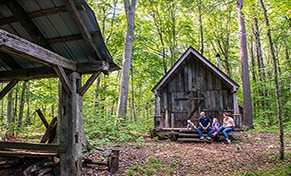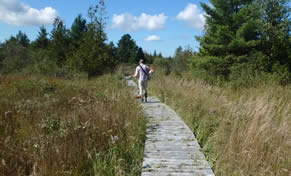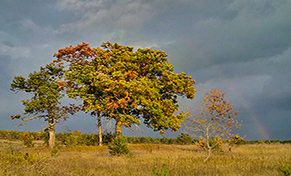GREAT LAKES
Federal ecozones: Mixedwood Plains, Boreal Shield
Area: 369,673 km2
Natural cover: 316,802 km2
Per cent natural: 86%
Protected area: 35,858 km2
Per cent protected: 10%
Number of NCC projects (all): 654
Number of species of birds: 277
Number of species of trees: 112
Number of species of mammals: 81
Number of species of amphibians: 26
Estimated human population: 14,648,703
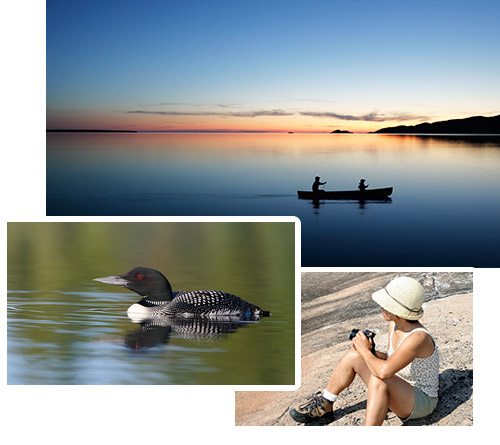
Description
The Great Lakes Basin in Ontario encompasses the water, watershed, coast and islands of the world’s largest freshwater resource. Stretching from the temperate forests and wetlands along Lake Erie to the boreal forests north of Lake Superior, the Great Lakes region is one of the most species-rich areas in Canada. From prickly-pear cactus on Pelee Island to mysterious woodland caribou on Superior’s north shore, the Great Lakes have a stunning diversity of plants and wildlife. Habitats in this region are very diverse and, while dominated by forests, include wetlands, savannahs, sand dunes and globally rare habitats called alvars.
Great Lakes Landscape
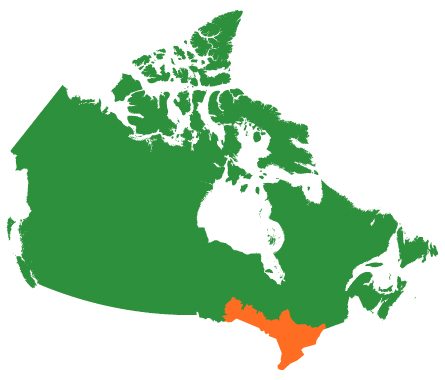
Conservation Values
The Great Lakes are the largest freshwater ecosystem in the world. The waters and coasts have many species that are endemic to the region and are found nowhere else in the world. Unique coastal habitats include freshwater dunes and beaches, alvars and lake-plain prairies. The Great Lakes region on the Canadian Shield has maintained much of its natural cover, and still includes large wilderness areas.
Challenges/Threats
The southern Great Lakes region includes areas that have been heavily modified by urban and agricultural land uses, and include over one-third of the Canadian population. In southwestern Ontario, there is less than 16 per cent of the natural cover remaining and only 2.5 per cent of the landscape is protected.
Many of the remaining natural habitats in the south are small and highly fragmented. Some urban areas in the Great Lakes are rapidly expanding, and high commodity prices are resulting in expanding agricultural lands.
Invasive species are impacting many aquatic and terrestrial habitats in this region, including European common reed, zebra mussel, garlic mustard and dog-strangling vine.
What NCC is doing
NCC is working in a number of priority natural areas in this region, including:
- Lake Ontario Coast
- Lake Superior
- Western Lake Erie Islands
In the northern part of the region, NCC is protecting some of the last Great Lakes coastal wilderness in places such as Lake Superior, Cockburn Island, Vidal Bay and the Bruce Peninsula. In southern Ontario, NCC is leading some of the region’s largest land protection and restoration projects, including on Pelee Island and north of Long Point.
NCC’s work in the Frontenac Arch in eastern Ontario is helping protect the continental corridor between Algonquin Park and the Adirondack Mountains in New York State.
Species at risk for which NCC has protected habitat in the Great Lakes region includes loggerhead shrike, wood turtle, gray ratsnake and lakeside daisy.
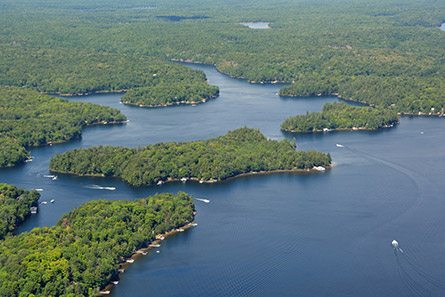
Did you know?
- The Great Lakes are a massive freshwater system, representing 20 per cent of the world’s surface fresh water. The volume of water in Lake Superior alone could cover all of North American under 30 centimetres of water.
- The coastline of the Great Lakes measures nearly half the circumference of the globe.
- With more than 32,000 islands, the Great Lakes are the largest freshwater collection of islands in the world and include the largest Island, Manitoulin.
- The Great Lakes provide drinking water to more than 40 million people.
- Lake Erie is the largest freshwater commercial fishery in Canada and one of the most valuable in the world.
Photo Credits (Top to bottom): All images iStock.

